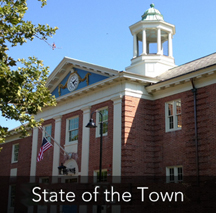(Editor’s note: click here for the most recent news story about the school building project, or use the search box in the right-hand column of the page to find older stories.)
To the editor:
At the March 28 Annual Town Meeting, the Lincoln School Committee will ask the community to consider three warrant articles related to a Lincoln School building project. The School Building Advisory Committee (SBAC), which was reconstituted by a vote at last year’s Town Meeting, has worked over the past 12 months to develop a wide variety of project concepts that range from repair projects at one end, to comprehensive renovation projects (repairs + systems upgrades + educational enhancements) at the other. For detailed information, the SBAC’s final report documents are here, and hard copies are available in the Lincoln Public Library and the superintendent’s office.
[Read more…] about Letter to the editor: school building warrant articles




